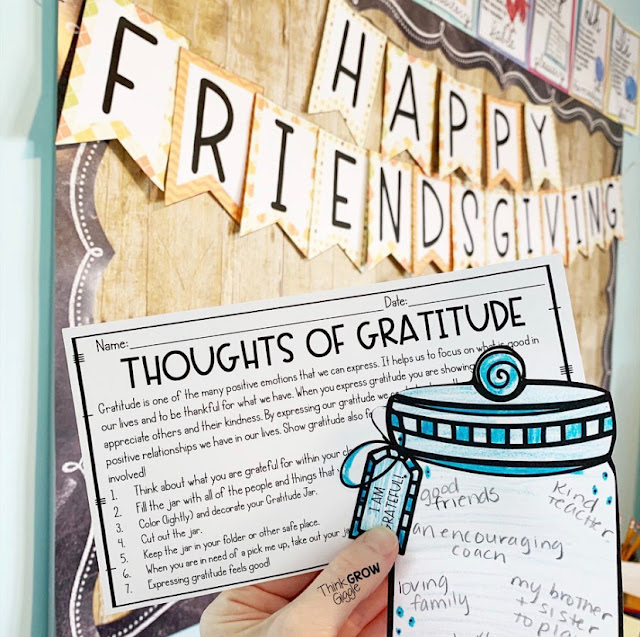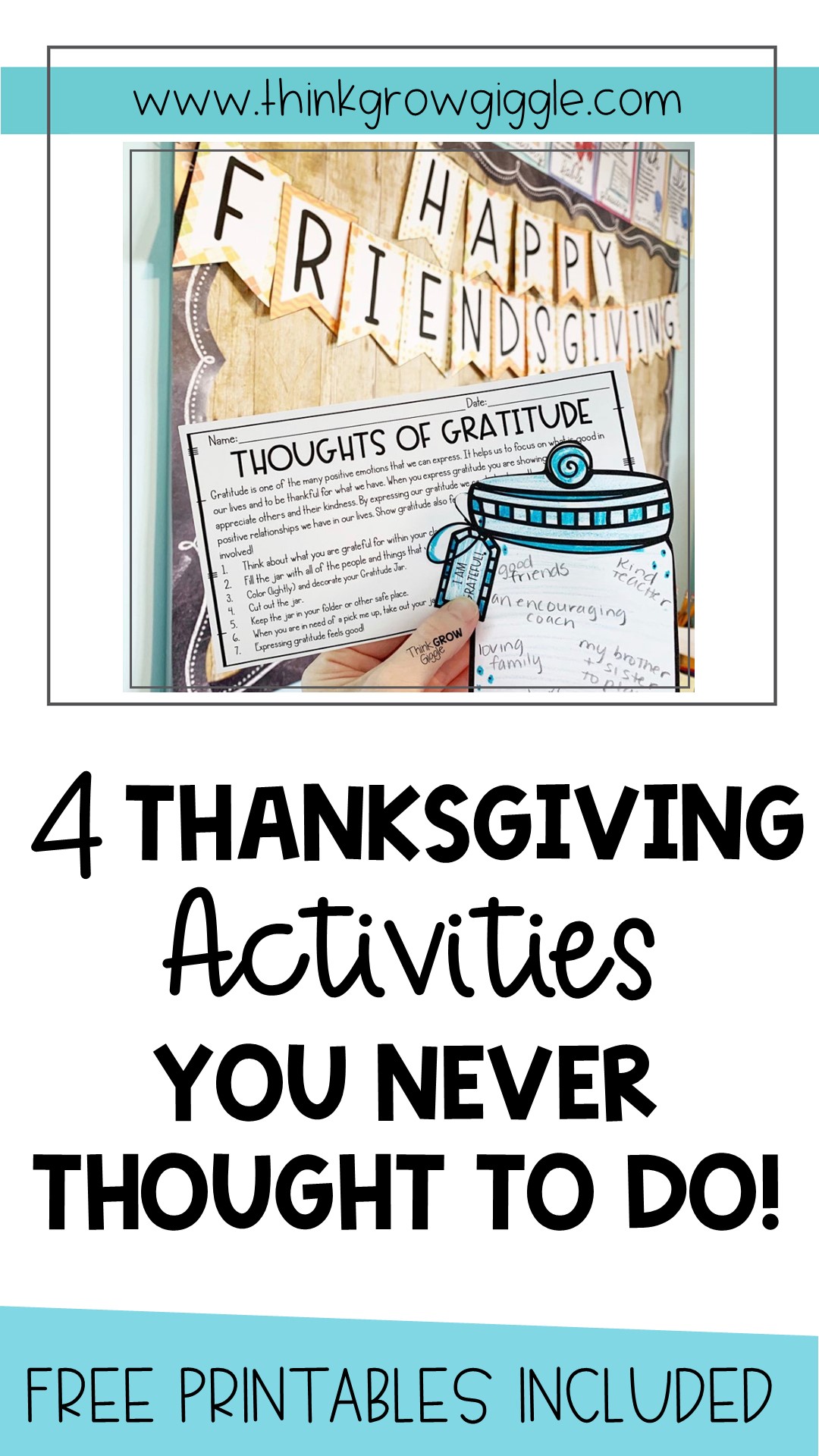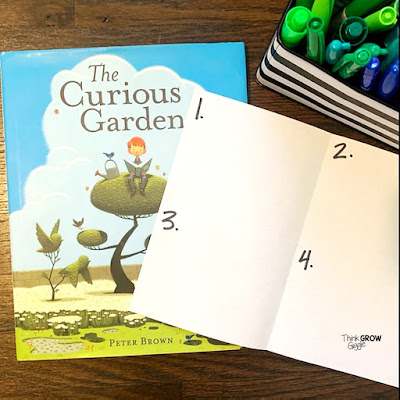Friendsgiving
What better way to continue to build community in your classroom this fall season than by celebrating Friendsgiving! Friendsgiving is a new "holiday" or concept and dates allllll the way back to 2007. It celebrates friendships and the relationships in our lives that we are thankful for.
You can celebrate Friendsgiving in your classroom by decorating for the holiday and celebrating students' friendships and the community you built with your students. Try these ideas:
- Try one of these read alouds: Friendsgiving or Be a Friend
- Create a Thankful Tree: Grab a large tree branch and plant it in a planter. Have students right on leaf cutouts what and who they are thankful for in your classroom throughout the month. Grab FREE thankful leaf printouts right HERE.
- Acts of Kindness: Celebrate and encourage kindness in your classroom. Try these ideas and these read alouds to get started!
- Thoughts of Gratitude: Have students create personal gratitude jars. Have them fill the jar with everything and everyone that they are thankful for. When they are feeling down, revisiting their gratitude jar will pick them up!
- Celebrate Classroom Friendships: This one is fun and easy! Copy a bunch of Venn Diagrams and throughout the month pair up different students. Have them get to know each other a little bit better and fill out a Venn Diagram about how they are the same and different, making sure to discuss why they make a great pair!
- Write Procedural Writing Pieces about How to be a Good Friend These are fun to write and display around the classroom and serve as a year-long reminder!
Letters of Gratitude to Staff
Have students recognize and celebrate the staff at the school who helps them grow. Have students write letters to custodians, the nurse, former teacher, special area teachers, and anyone else that they like.
In my classroom, we kick this activity off by brainstorming a list of staff members that they can write to at the board. One at a time the students select who they would like to write to and place a tally mark next to their name. This helps us spread the love and allow many different people in our building to get a letter of gratitude.
I love this project because kids can use any paper and get super creative with the cards they make. You can also have students write a poem, write a friendly letter, or fill out thank you note cards.
Grab some quick tips on how to teach the art of writing thank-you notes and download these FREE thank you templates for your students to use right HERE.
I Wish Poetry
Most Thanksgiving activities have students write about what they are thankful for. Those are great for students to reflect on the thanks part of Thanksgiving.
But I love to go a step further and have students write I Wish Poems. This gives them the opportunity to make a wish for the world and encourages thoughts of giving during the Thanksgiving season.
An I Wish poem is a free verse poem that allows the poet to write what they wish for others. In my classroom, we discuss the popular tradition of breaking a wishbone and how the world would be better if we all give our wishes to others.
My students blow me away with the wishes for the world that they write about and they truly make the most meaningful bulletin board display.
Celebrate Native American Month
November is Native American Month. Celebrate and honor our country's Native Americans by teaching students about their heritage.
- Read picture books to celebrate Native American culture. Try these!
- Research Native Americans native to where you live with this link.
- Watch videos on Brain Pop Jr about different Native American cultures.
Tie together close reading strategies with rich, American History with passages that celebrate Native American heroes.
Make November a time of gratitude and classroom community building this year! Teach students about kindness, gratitude, and the power of friendships. These lesson ideas will leave a lasting impression on students and encourage students to not only be thankful but to make a change in the world around them.




























